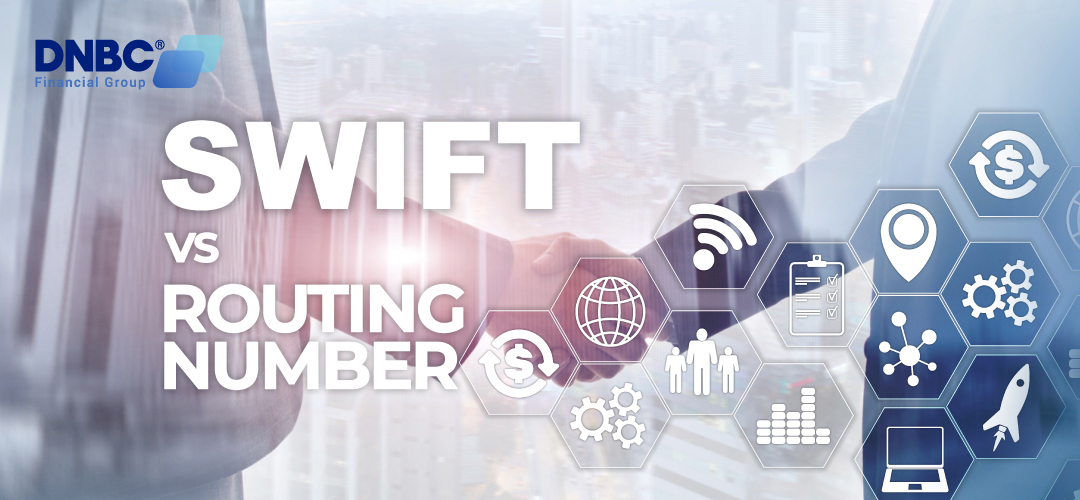Several methods exist in the banking sector to ensure the safety of financial transactions and to facilitate communication between banks and financial institutions so that sensitive data won’t be shared and breach confidentiality. For that reason, some unique identifiers are used, such as SWIFT or Routing Numbers, which are based on a predetermined set of criteria.
So, Is the SWIFT code the same as the routing number? Long story short, the two are not identical. In this article, we’ll go deeply into 2 of these identifiers—SWIFT codes and Routing Numbers—that are often heard in international trade and see the differences between the two. Find out now.

Is SWIFT code same as routing number?
What is the difference between Swift Codes and Routing Numbers?
SWIFT codes are similar to Routing Numbers, however, their primary distinction is in the situations in which they are used. Regardless of what you may call it, if you want to do any kind of foreign business, you will need a SWIFT code. On the other hand, to do business within or outside the United States would require access to their bank’s unique Routing Number from American citizens.
To put it simply, a Routing Number is required with a SWIFT code whenever a transaction is made between a bank in the United States and a bank in another nation. But for domestic U.S. transactions, only the Routing Number is needed.
What is SWIFT Code?
Brussels-based cooperative organization SWIFT handles monetary and commercial transactions. Financial institutions all throughout the world use SWIFT, which is an abbreviation for the Society for Worldwide Interbank Financial Telecommunication. The firm was founded to facilitate financial kinds of deals, with an initial focus on cross-border payments.
Because of the quality of the company’s software and the universally recognized ISO 9362 Business Identifier Codes (BICs), it is the go-to choice for the majority of financial institutions serving a sizable clientele.
Every bank and other financial institution has its own specific identity. A BIC may be formatted in one of many standard ways, and ISO 9362 is the identifying code for one of those forms.
Among the information included in a BIC are
- Bank code (4 characters)
- Country code (2 characters)
- 2-character location identifier
- Lastly, A 3-character designation for a specific branch
The use of the branch is often optional, this means that a SWIFT code may include either 8 or 11 characters in total.
Despite the seeming simplicity of this explanation, there is often much misunderstanding about the role of SWIFT and the meaning of SWIFT codes. In reality, few people understand the system and how the two ideas work together.
Let’s go deeper into the background and purpose of SWIFT codes to find out.
Operation of SWIFT codes
Simply speaking, SWIFT is a messaging transporter. Although SWIFT is an integral aspect of many banks and other financial organizations and is used in almost all commercial transactions, it is not an actual entity.
Instead, it offers a protected messaging platform that banks all over the world may use to connect with one another. Therefore, it is just a strong, secure, reliable, and effective messenger.
In other words, SWIFT is only a system that stores and sends the intended messages and does not monitor or record any financial information that is communicated in the network.
It aids top-tier organizations by giving them a place to discuss sensitive business matters without worrying about the information leaking to the public.
Customers have faith in SWIFT because of the network’s security, which contributes to the company’s credibility and growth. A SWIFT code is a unique identifier for a financial institution that is created and managed by SWIFT itself.
What is a Routing Number?
In 1910, the ABA came up with the concept of Routing numbers to make it easier to classify and send checks to the proper bank and ease the necessary monetary transactions. This has led to the numbers being known as “ABA numbers.”
In order to determine the bank from which a check is drawn, a 9-digit routing number is displayed on the bottom, usually on the left. These numbers represent the check’s routing number, account number, and check ones, respectively. At the bottom of the check is a sequence of digits that vary from the rest of the check’s printing in terms of both font and size.
If you have ever heard about the MICR (magnetic ink character recognition), it is just an ink version of a routing number. In order for machines to read the MICR form, it is written using a special magnetic or electronic ink. Thus, it’s more efficient and saves time to process the checks in this way.
There are 3 primary components to a routing number:
- The first 4 digits of the number are the Federal Reserve Bank’s routing number.
- The next 4 numbers represent the ABA’s institution identification or the bank’s specific code.
- Finally, the check digit at the end.
Additionally, the first four digits of a complete route number might provide useful information about the monetary exchange. So, let’s explain what those numbers represent in the Federal Reserve system:
- For the first 2 digits, there is no set pattern, which may be anything from 00 to 80:
- A United States government agency’s internal currency is 00.
- There are 12 federal banks in the United States, and their corresponding routing numbers are 01 through 12.
- Those in the 21-32 range are often employed by savings banks and other types of thrifty financial establishments.
- For non-banking purposes only, utilize 61-72. These identifiers may also be used in electronic transactions and go by the name “E-TIDs” (ETIs).
- Only travelers’ cheques with the routing number 80 may be cashed.
- The original designated processing center is indicated by the 3rd digit.
- The fourth digit will be between 1 and 9, with each value representing one of the 12 Federal Reserve districts. For banks, a 0 in the 4th number denotes that they are situated in a Federal Reserve district.
Summary of the difference between SWIFT Code and Routing Numbers
| Parameters of Comparison | SWIFT Code | Routing Numbers |
| Definition | A unique identification code that is assigned to financial institutions that provide identification in the international market. | They are made of 9 digits that help in the identification of a financial institution, specifically in the context of processing checks. |
| Year of Development | 1973 | 1910 |
| Founder | Carl Reuterskiöld | American Bankers Association (ABA) |
| Requirement | Generally required for all international financial transactions around the globe. | Only required for domestic transactions in the United States |
| Length | They contain either 8 or 11 characters in total, all of the letters. | They consist of 9 characters in total, all of them digits |
| Acquirement | SWIFT code can be found on a bank statement, even via online banking. | Routing number is printed on a check and can also be generated using an appropriate generator online. |
About DNBC Financial Group
DNBC Financial Group is passionate about streamlining global financial transactions. We’ve expanded quickly to help businesses and individuals all over the world reduce the cost of sending and spending money abroad, collecting payments from international customers, moving cash between international subsidiaries, and managing the risk of currency fluctuations.
Or please contact DNBC
![]() Email: [email protected]
Email: [email protected]
![]() Phone Number:
Phone Number:
- +65 6572 8885 (Office)
- +1 604 227 7007 (Hotline Canada)
- +65 8442 3474 (WhatsApp)



 DNBC Team
DNBC Team